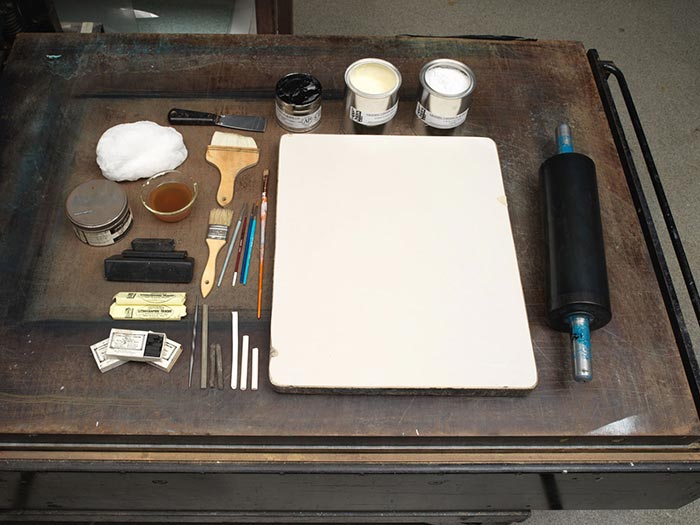Initiation Ceremonies of the Darktown Lodge-Part First.: The Grand Boss Charging the Candidate
Publisher Currier & Ives American
Not on view
The late nineteenth-century Darktown prints by Currier & Ives depict racist stereotypes that are offensive and disturbing. The Metropolitan Museum of Art preserves such works to shed light on their historical context and to enable the study and evaluation of racism.
This print caricatures six Black (African American) men conducting a form of a freemason ceremony with a goat. At left, standing on a low platform, a rotund man, wearing a red helmet adorned by a blue feather and a blue/white striped "Roman" tunic (accented with a gold trim belt and straps), holds a sword (pointing downward) in his right hand, while in his upraised yellow-gloved left hand, he presents a skull with fiery smoke emanating from its eyesockets. A blue/white striped umbrella canopy hangs over his head. He is flanked by two sentries. One (far left--shown in profile) wears a knight's helmet with a closed visor and brown boots; he stands erect holding a large saw upright (instead of a sword or lance). The other helmet-clad sentry (facing the viewer to left of center) stands holding a green ewer in a green basin. Approaching the "Grand Boss" from the right is a balking goat with a frightened, open-mouthed, bare-chested rider on its back; two men are dragging the goat via a rope tied around its horns. One man pulling the tethered goat wears a tank top with red stripes, green shorts, and a "helmet" fashioned from a pot; the other wears a light blue/white striped unitard, a white mask over his eyes, and a yellow crown of feathers (?). Part of the wall (upper right quadrant) is decorated with a crescent moon surrounded by five stars and a shining sun above a snake. The title and caption are imprinted in the bottom margin.
This print is a companion to "Initiation Ceremonies of the Darktown Lodge-Part Second: The Candidate Charging the Grand Boss" [P. 382, Gale 3327; Metropolitan Museum of Art accession no. 52.632.29].
Nathaniel Currier, whose successful New York-based lithography firm began in 1835, produced thousands of prints in various sizes that together create a vivid panorama of mid-to-late nineteenth century American life and its history. People eagerly acquired such lithographs featuring picturesque scenery, rural and city views, ships, railroads, portraits, hunting and fishing scenes, domestic life and numerous other subjects, as an inexpensive way to decorate their homes or business establishments. As the firm expanded, Nathaniel included his younger brother Charles in the business. In 1857, James Merritt Ives (the firm's accountant since 1852 and Charles's brother-in-law) was made a business partner; subsequently renamed Currier & Ives, the firm continued until 1907.

